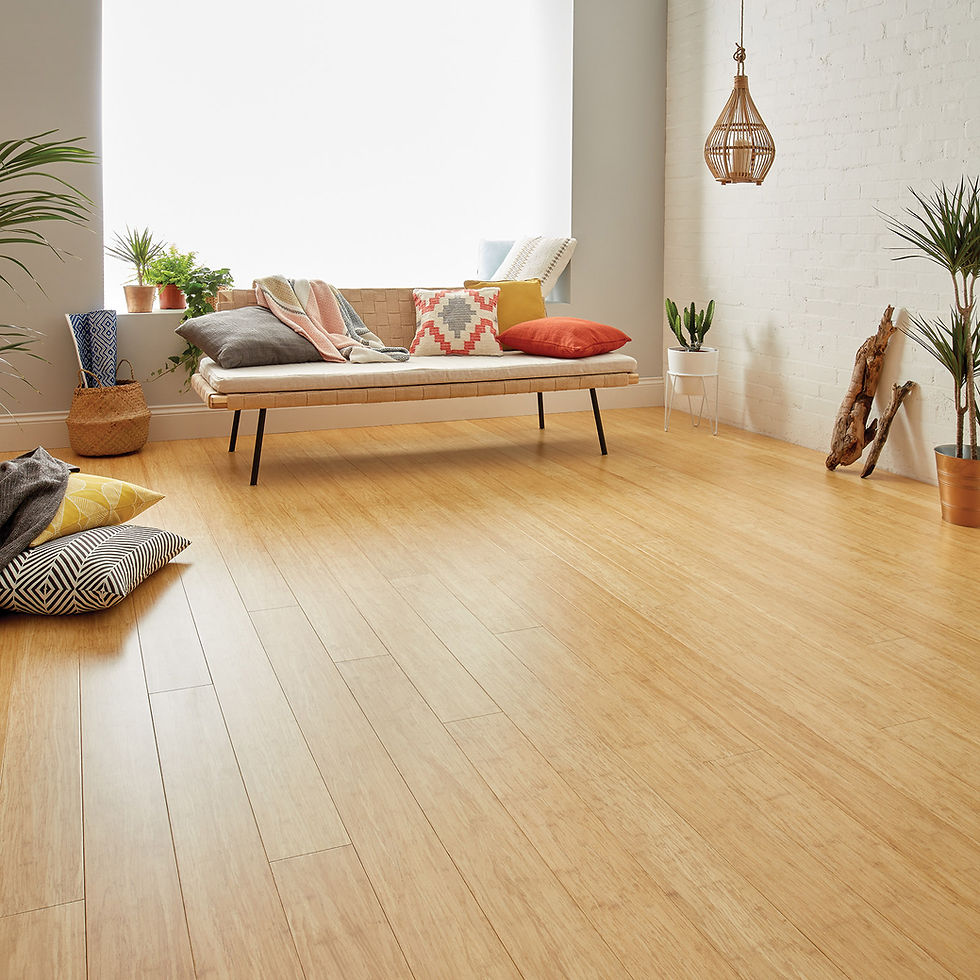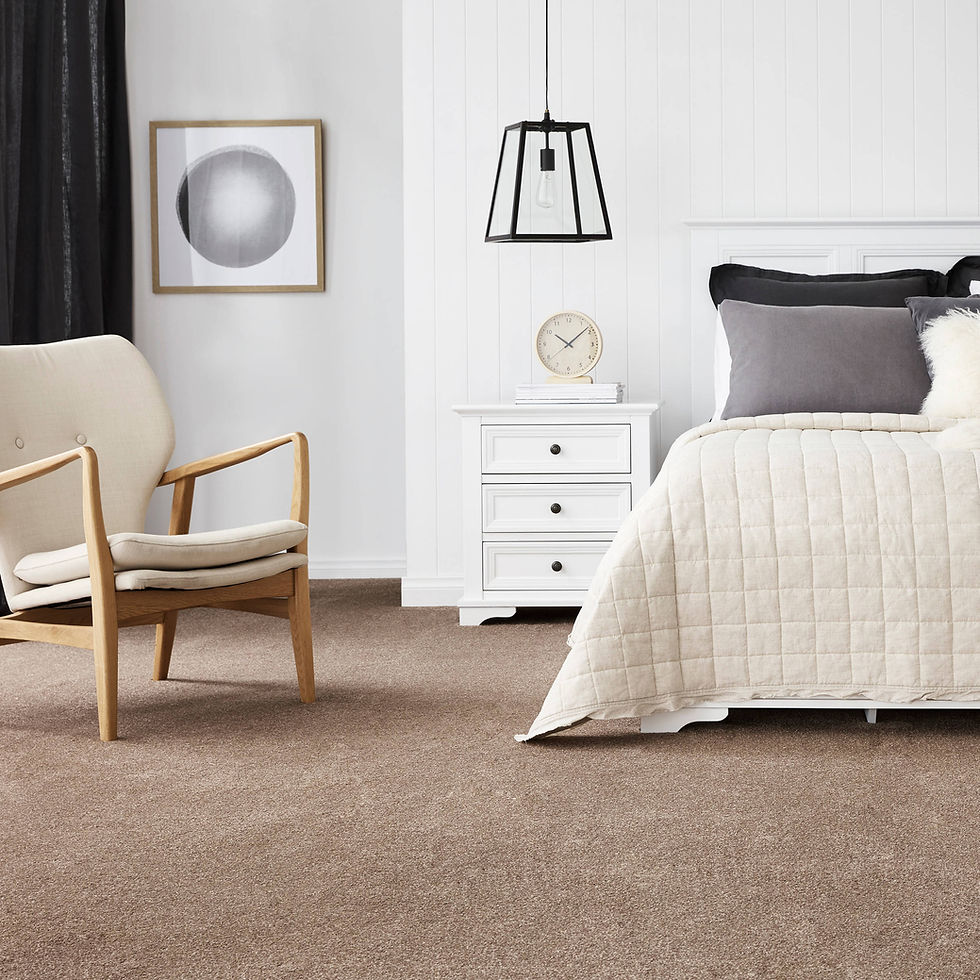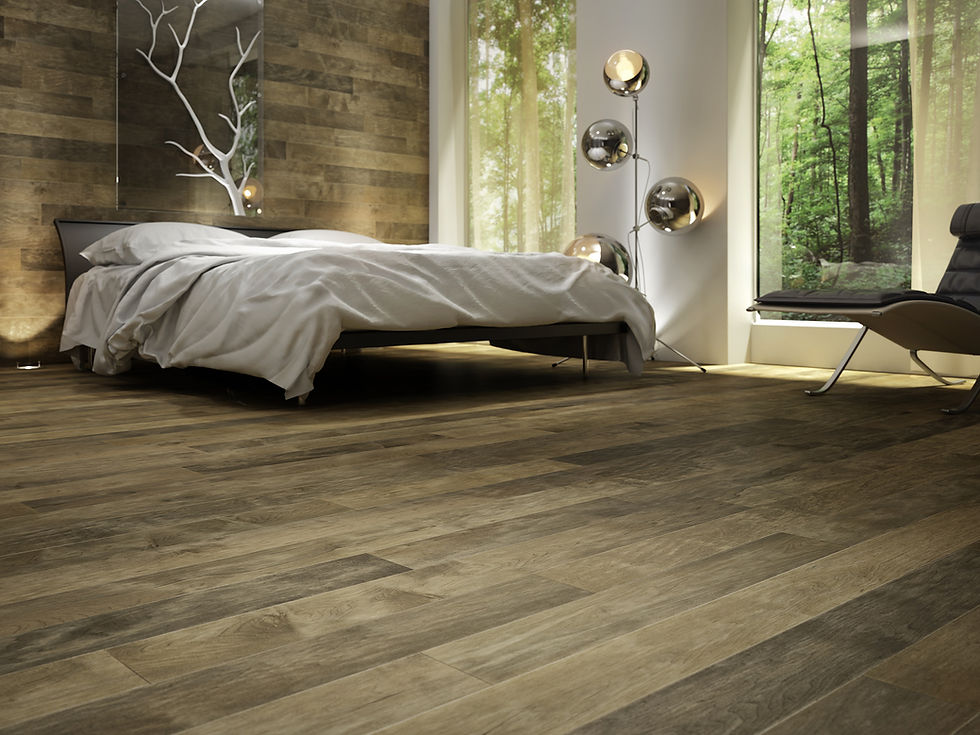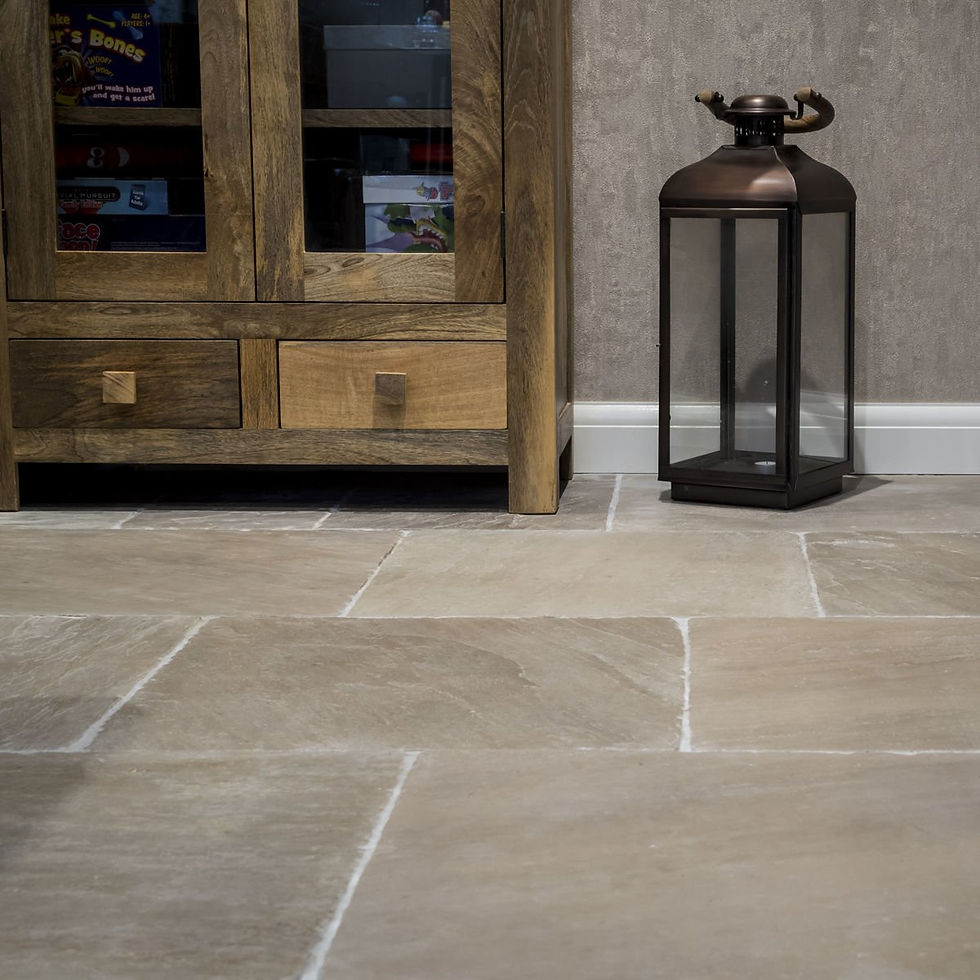What Are the Effective Green Flooring Options?
- alex87032
- Dec 15, 2021
- 3 min read
If you're looking to go green with your flooring, there are many choices available. Most people think of "green" as being made from a natural, renewable substance, but there's more to consider if you really want a floor that's environmentally friendly. These are the factors that affect a flooring material's impact on the environment:
Ability to be renewed
Ability to be recycled
Responsible manufacturing
Transport distance
Maintenance
Life cycle
Here are nine of the best green flooring options that are durable and cost-effective.
01 of 09
Cork Flooring

Average price: $7-$10 per square foot. A naturally renewable material, cork is manufactured from the bark of the cork oak tree, which grows back after being harvested. It provides insulation against heat and cold and is naturally repellent to bugs, mold, and mites. Some cork flooring is made from recycled bottle stoppers.
02 of 09
Linoleum Flooring

Average price: $6-$8 per square foot. Linoleum is made from oxidized linseed oil which is produced naturally from flax plants. This material is widely available and highly renewable. Production does not have a significantly negative effect on the environment and Linoleum floors can last for 25 to 40 years. When the material is no longer used it can be burned as fuel. Linoleum can be composted with other materials and there is current work underway to make the process of harvesting even more sustainable.
03 of 09
Bamboo Flooring

Average price: $7-$12 per square foot.
Bamboo is one of the fastest-growing plants with a harvest cycle of just three to five years, making it very renewable. The drawback to bamboo is that it is mostly produced in the Pacific Rim, and so there can be a significant amount of pollution created by importing it to another location.
04 of 09
Eco-Friendly Carpeting

Average price: $3-$13 per square foot. Caution when buying carpet, as it is often produced from petroleum, a nonrenewable resource. Some carpets can also trap dust and mold or can release harmful particles into the air. The best choice is carpet made from natural materials such as wool, jute, and seagrass.
05 of 09
Hardwood Flooring

Average price: $7-$12 per square foot. Hardwood flooring is a natural product of the earth that is constantly being renewed. It is completely biodegradable and can be easily recycled at the end of its life and used as fuel or other flooring projects.2 However, you have to make sure that the wood you choose comes from forests certified well-managed by the Forest Stewardship Council.
06 of 09
Recycled Hardwood Floors

Average price: $7-$13 per square foot. This refers to wood that has been recycled from other flooring or building applications. Many types of wood are scarce but can be sourced from recycling materials in old buildings. The use of these materials cuts down on waste and prevents the chopping down of a living tree.
07 of 09
Natural Stone Flooring

Average price: $8-$35 per square foot. Stone is a natural product of the earth that is constantly being recreated by natural tectonic processes. It does not harm the environment and can be recycled into other flooring projects. However, stone is quite heavy, so the transport impact on the environment for imported materials can be significant.
08 of 09
Recycled Metal Tiles

Average price: $30-$70 per square foot.
Metal tiles are manufactured from scrap pieces of aluminum, copper, or brass. Since this material is a finite resource that is not biodegradable, using it in a flooring application keeps it out of the landfill and preserves dwindling supplies of metallic substances.
09 of 09
Recycled Glass Tiles

Average price: $35-$100 per square foot.
These tiles are made from recovered glass waste such as discarded bottles and broken windows. Their use prevents these non-biodegradable materials from ending up in a landfill.




Comments